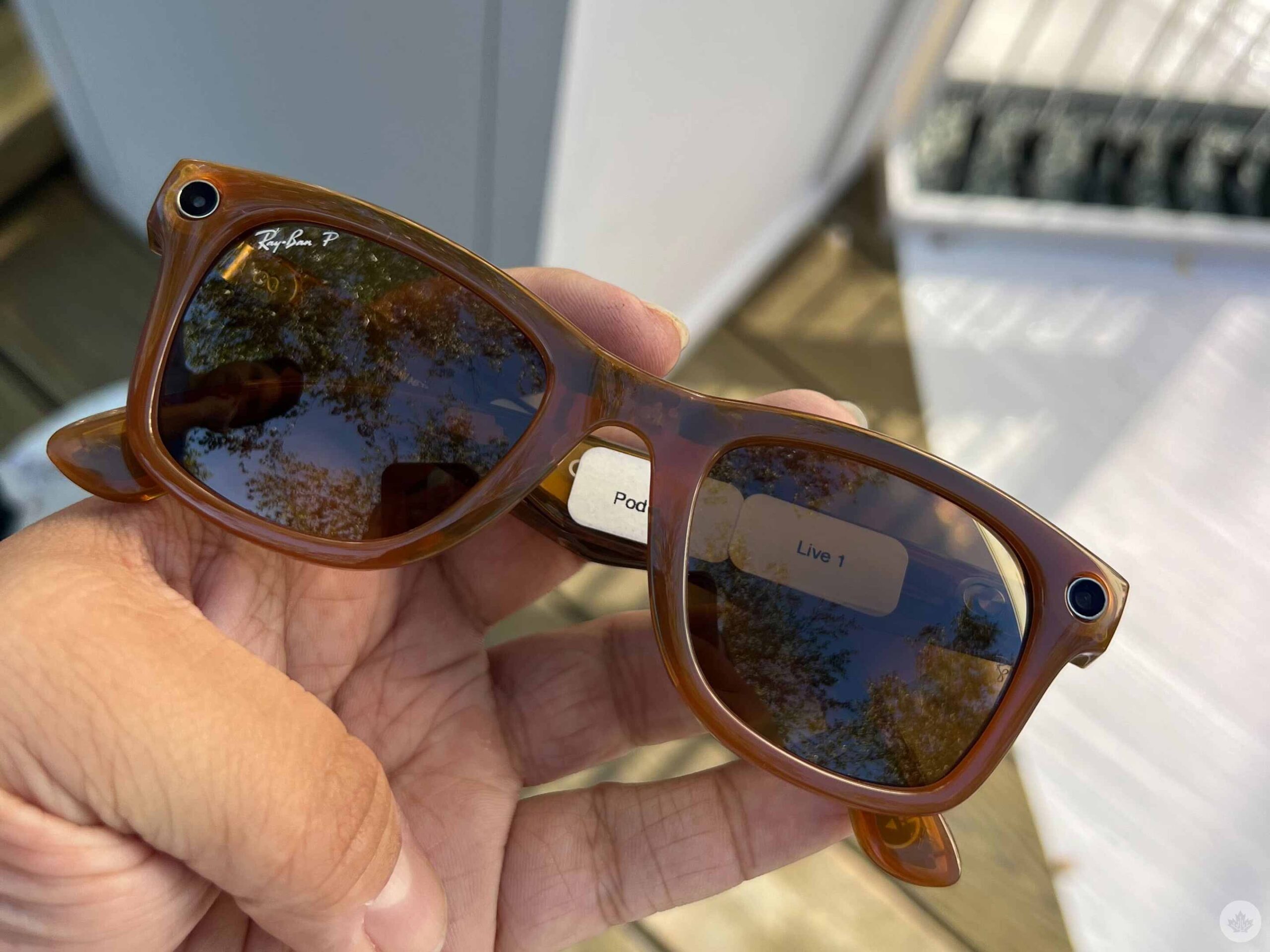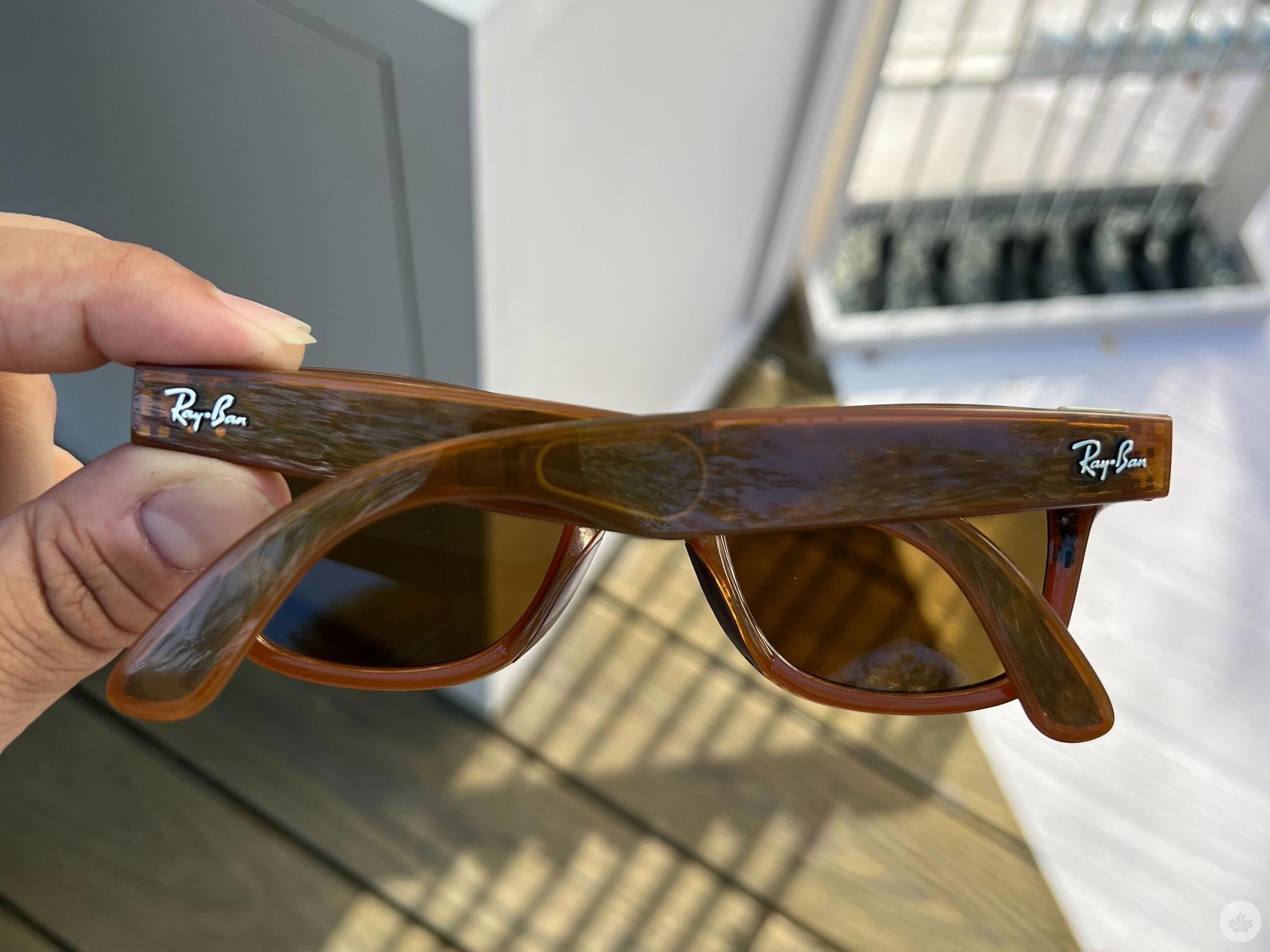Two years ago, my colleague, Dean Daley, reviewed the Ray-Ban Stories, Meta’s first take on smart glasses. At the time, I’ll admit that I didn’t really understand them or their counterparts from the likes of Snap.
Now, though, after attending Meta Connect 3 and trying the company’s second-gen wearables, simply titled the Ray-Ban smart glasses, I actually found there’s quite a lot to like.
To start, as someone who once used transition glasses but got LASIK recently, traditional sunglasses are right up my alley now. With that in mind, Meta’s new smart glasses immediately have a practical function, on top of sporting Ray-Ban’s stylish aesthetic. And considering that standard Ray-Ban sunglasses regularly go for just over $200 in Canada, it’s not too much of a stretch to consider paying around $150 to $200 more for pairs with all of Meta’s bells and whistles.
On that front, Meta has really upped its game since the first-gen smart glasses. That all starts with the new dual 12-megapixel cameras, a significant upgrade from the previous 5-megapixel system. This alone is a game-changer, as it’s now far more of a feasible social media peripheral versus the often rough-looking media you’d capture with the old glasses. Indeed, the photos and videos that I took with the second-gen glasses were surprisingly crisp, and it’s easy to see how you’d want to post these to Instagram or even just save them to your phone’s camera roll through the companion app.
I will note, however, that I tried livestreaming to Instagram — which you can now conveniently do directly from the glasses — and the video was a bit choppy, although that could have just been due to a briefly spotty connection. Complementing the overall strong visual quality are the new speakers. Now, a huge pet peeve of mine is when people play their music loud and headphones-free in public, so my immediate concern would be to become such an ignoramus with these glasses. However, Meta has somehow managed to offer extended bass and improved directional audio considerably so the speakers better project towards your ears while still being 50 percent louder this time around.
Complementing the overall strong visual quality are the new speakers. Now, a huge pet peeve of mine is when people play their music loud and headphones-free in public, so my immediate concern would be to become such an ignoramus with these glasses. However, Meta has somehow managed to offer extended bass and improved directional audio considerably so the speakers better project towards your ears while still being 50 percent louder this time around.
For my demo, Dua Lipa’s hit Barbie song “Dance The Night” was playing on the connected phone, and when I put it as loud as I could (simply by swiping forward on the frame), the two other journalists standing closely on either side of me could barely hear it, even when concentrating. The same was true for me with the music playing on their glasses. Admittedly, we were in a relatively empty outdoor demo space on Meta’s campus, so it’s possible that audio would be drowned out in larger social environments, but for now, it’s undeniably impressive. I’m often forgetting headphones at home or in the car, so it’s nice to know I’d at least have a backup with the glasses in those cases.
 Meanwhile, Meta is pushing its new Siri-esque Meta AI conversational assistant with the new glasses. Admittedly, I’ve never much cared for voice commands for any device, but these could be useful here, especially in quick spur-of-the-moment situations. As an example, the demo area had little mini-golf courses on which you could test the video recording. Instead of disrupting the flow of the game or risking missing a good shot, it was certainly easier to say “Hey Meta, record a video” and immediately begin recording up to one-minute clips of me golfing.
Meanwhile, Meta is pushing its new Siri-esque Meta AI conversational assistant with the new glasses. Admittedly, I’ve never much cared for voice commands for any device, but these could be useful here, especially in quick spur-of-the-moment situations. As an example, the demo area had little mini-golf courses on which you could test the video recording. Instead of disrupting the flow of the game or risking missing a good shot, it was certainly easier to say “Hey Meta, record a video” and immediately begin recording up to one-minute clips of me golfing.
That’s a more everyday example, to be sure, but it’s easy to see how content creators and other prominent figures would get even more mileage out of it, especially with the Instagram and Facebook livestreaming capabilities. During the Meta Connect keynote, a video featuring F1 driver Charles Leclerc showed him using the hands-free features to capture his daily activities, which included exercising, driving in beautiful foreign countries, and even go-karting. And even if you’re not famous, using it like a GoPro when, say, biking or hiking, certainly seems fitting.
Just got smarter. Next gen POV with #RayBanMeta pic.twitter.com/2fKzq7AYWO
— Ray-Ban (@ray_ban) September 27, 2023
Of course, you can do a lot more with Meta AI besides basic voice commands like capturing photos or videos. In particular, Meta is really leaning into the “conversational” element here by letting the AI answer all kinds of questions. These can be simple fact-based queries (“Who is the current U.S. president?” to which it correctly responded “Joe Biden”) to something more subjective, like when I asked, “Does pineapple belong on pizza?” Amusingly, it responded with: “The decision to put pineapple on pizza is a controversial and subjective matter, and ultimately, whether or not pineapple belongs on pizza is a matter of personal preference.” (For the record, the correct answer is that pineapple on pizza is disgusting).
I’ll confess that I’d feel weird asking an AI any questions out loud, but those who are less self-conscious likely could have fun with it. If nothing else, it’s a fun, if gimmicky, feature to have, and there’s always the standard voice commands that I’d definitely be more likely to use.

Some questions remain, to be sure, like how many people will regularly leverage these features, given reports of minimal usage of Meta’s first-gen glasses among owners. Battery life was also a concern with the first-gen glasses, and I obviously couldn’t get a bearing on that in my demo. Meta says that with the new slimmer Ray-Ban charging case, you’ll get up to 36 hours of use.
But by the end of my demo, I walked away quite impressed with the whole experience. Are the Meta Ray-Ban smart glasses fundamentally a neat and kind of silly toy? Absolutely, but the combination of Ray-Ban’s chic frames, Meta’s social features and the surprisingly solid audio quality make them an appealing toy, even for someone like me who doesn’t have a large online following to whom I’d regularly stream.
The Ray-Ban smart glasses come in several colour options, including ‘Shiny Black,’ ‘Matte Black,’ ‘Shiny Caramel’ and ‘Matte Jeans,’ and start at $369 in Canada. You can pre-order a pair from Meta’s website ahead of an October 17th launch.
